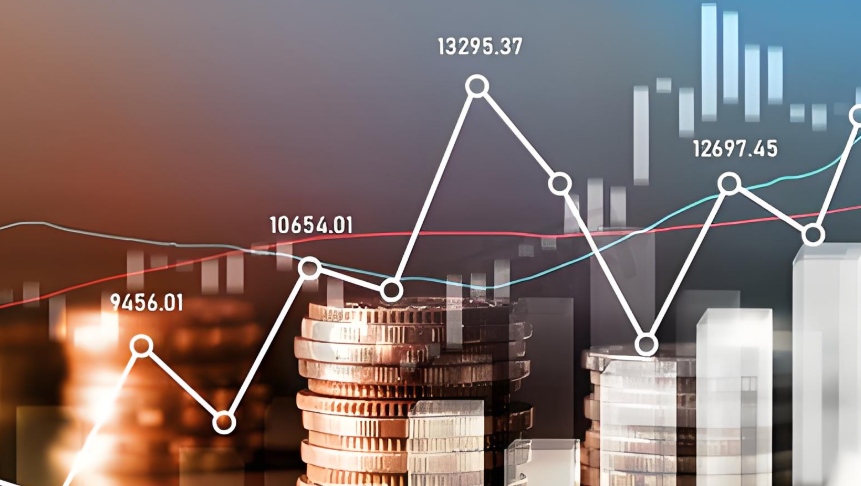The Story Behind the Dollar's Significant Decline
Advertisements
On February 14, a notable shift in the global financial landscape occurred with the U.S. dollar index experiencing a significant decline, reaching its lowest level since January 27. This downturn in the dollar was no mere coincidence; rather, it stemmed from an intricate interplay of several factors that not only impacted the dollar's own trajectory but also triggered a domino effect across major currency markets worldwide.
One primary catalyst for the dollar's weakness was the producer price index (PPI) report released in January. This report indicated signs of an easing inflationary environment. While the growth in producer prices superficially surpassed economists' expectations, the anticipated drop in core personal consumption expenditure (PCE) data sent ripples through the markets. The Federal Reserve has traditionally regarded core PCE as a vital indicator of inflation, and upcoming forecasts suggested it might come in lower than previously projected. This revelation was akin to a pebble disrupting a still lake, causing a flurry of reactions. Concerns began to mount that the Federal Reserve could delay interest rate hikes and may even entertain reducing rates. Such apprehensions rapidly became evident in the futures market, with increased pricing reflecting expectations for interest rate cuts prior to December, which further entrenched the market's stance on a weakening dollar. Following the release of the data, the dollar index promptly dropped by 0.61%, settling at 107.25, marking a one-and-a-half-month low. This reaction underscored the market's acute sensitivity to inflation metrics and Federal Reserve policy expectations.
Simultaneously, statements from the U.S. government regarding tariffs contributed negatively to the dollar's standing. The announcement to postpone imposing reciprocal tariffs on other nations garnered considerable international attention. Historically, the U.S. has wielded tariffs as a tool, escalating tensions in global trade and impacting economies worldwide to varying degrees. This recent decision to delay tariffs emerged as a timely reprieve, alleviating some of the heightened trade anxieties and offering a glimmer of hope for global economic stability. White House officials indicated that these tariffs could come into effect in the coming weeks, although the economic team continues to evaluate bilateral tariff and trade relations. This suggests a shift towards a diplomatic approach rather than immediate aggressive tariff actions. The market swiftly responded to this optimistic signal, leading to a waning of concern, which further contributed to the dollar's decline. Tariff uncertainty has long been a major factor influencing the dollar's exchange rate, and as this uncertainty diminished, the dollar's support diminished as well.

Moreover, the rise of the euro and other European currencies represented a significant opposing factor to the dollar's drop. Following the announcement regarding tariffs, the euro surged by 0.58%, reaching $1.0442, the highest level since January 30. This phenomenon was driven by multiple factors. Firstly, the postponement of tariffs reduced export pressures on European countries, creating a more optimistic economic outlook. Secondly, the prevailing bearish sentiment towards the dollar prompted investors to shift their assets towards the euro and other currencies. Other European currencies, including the Swiss franc, Swedish krona, and Norwegian krone, also saw appreciable gains. The strengthening of these currencies further squeezed the dollar’s space in the international market and intensified the downward pressure on its value.
Attention must also be paid to the British pound, which exhibited marked strength after data indicated the UK economy had performed better than anticipated. Reports revealed that the British economy experienced an unexpected growth rate of 0.1% in the fourth quarter of the previous year, prompting the pound to climb 0.8% by the close, pricing at $1.2541. Since the Brexit developments, the UK economy has faced numerous hurdles, but this latest growth data demonstrates resilience and potential pathways to recovery. This not only provided robust support for the pound but also diminished the dollar's relative strength in international exchanges. Investors began to recognize the UK's economic potential, increasing their allocation towards pound-denominated assets while reducing their reliance on the dollar.
In summary, the decline of the dollar can be attributed to a confluence of factors. Not only did the PPI data suggest potential cooling in inflation, but adjustments in market expectations regarding the Federal Reserve’s future policy trajectory played a pivotal role. Additionally, the postponement of tariff plans and alterations in international dynamics had immediate implications for the dollar's valuation. The dollar's weakness not only facilitated a rise in currencies such as the euro and yen but also enhanced the overall risk sentiment globally. Looking ahead, as more PPI data is released in the upcoming weeks, market expectations surrounding inflation and interest rates will continue to shape the dollar's trajectory. Should inflation metrics persist in downward trends, anticipations for a rate cut by the Federal Reserve will likely intensify, posing even greater devaluation pressure on the dollar; conversely, a rebound in inflation data may bolster the dollar. Furthermore, U.S. trade policies remain a focal point for investors, as any changes in tariff strategy could trigger volatility in global financial markets. Stakeholders will need to remain vigilant about these developments and adapt their investment strategies accordingly to navigate the surrounding uncertainties.
Leave Your Comment